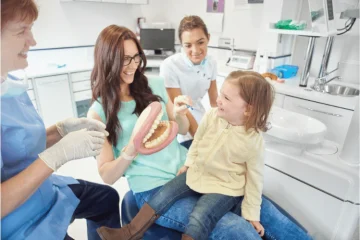Chronic wounds represent a formidable challenge in the healthcare landscape, especially among populations with compromised healing capabilities such as diabetic patients. The persistent nature of these wounds, coupled with their susceptibility to infections and complications, necessitates innovative treatment strategies. Hyperbaric Oxygen Therapy (HBOT) emerges as a beacon of hope in this context, offering a non-invasive yet effective solution to a problem that affects millions worldwide. This article delves into the role of HBOT in chronic wound healing, marking its significance as a new frontier in medicine.
Understanding Chronic Wounds
Chronic wounds are injuries that fail to progress through the normal stages of healing within an expected timeframe, often stuck in an inflammatory state that prevents closure and regeneration of tissues. These wounds are commonly seen in individuals with diabetes, venous or arterial insufficiency, and those suffering from immobility. The prevalence of chronic wounds is a growing concern, with diabetes being a significant contributor due to the impaired blood flow and nerve damage it can cause.
The Science Behind HBOT
Hyperbaric Oxygen Therapy operates on a simple yet profound principle: increasing the amount of oxygen your blood can carry. Traditionally, HBOT involves placing the patient in a pressurized chamber where they breathe 100% oxygen at pressures higher than atmospheric pressure at sea level. This process significantly boosts the oxygen levels in the blood, which in turn enhances the body’s innate healing mechanisms. Oxygen is critical for various stages of wound healing, including inflammation, proliferation, and remodeling. By saturating tissues with oxygen, HBOT can overcome the hypoxia (oxygen deficiency) that often characterizes and impedes the healing of chronic wounds.
HBOT in Action: Mechanisms at Play
The therapeutic benefits of HBOT in chronic wound management are multifaceted. Firstly, the enhanced oxygen delivery helps to combat infection, a common complication in chronic wounds. Oxygen-rich environments are inhospitable to many bacteria, including anaerobes that thrive in the oxygen-poor conditions of a chronic wound. Secondly, HBOT stimulates the formation of new blood vessels (angiogenesis) in the wound area, improving blood flow and, consequently, oxygen and nutrient delivery to the damaged tissues. This process is crucial for sustaining the healing phases.
Moreover, HBOT has been shown to increase collagen production, which is essential for the strength and integrity of newly formed tissue. It also modulates the inflammatory response, reducing chronic inflammation that can hinder the healing process. The cumulative effect of these mechanisms underpins the effectiveness of HBOT in accelerating chronic wound closure and minimizing the risk of infections and amputations, particularly in diabetic foot ulcers.
Navigating Challenges and Looking Forward
Despite its proven benefits, the utilization of HBOT in chronic wound management is not without challenges. Accessibility, cost, and a lack of awareness among both patients and healthcare providers can limit the adoption of this therapy. Furthermore, standardized protocols for HBOT in the context of wound care are still evolving, necessitating further research and clinical trials to optimize treatment regimens.
Looking forward, the integration of HBOT into comprehensive wound care programs represents a promising avenue for enhancing patient outcomes. As technology advances and more becomes known about the mechanisms underpinning chronic wound healing, HBOT is poised to play an increasingly pivotal role. Collaborative efforts among researchers, clinicians, and policymakers are crucial to overcoming existing barriers, facilitating access to HBOT, and ultimately redefining the management of chronic wounds.
Expanding the Scope: HBOT for Other Conditions
While the focus has primarily been on chronic wound healing, HBOT’s scope extends far beyond. Its therapeutic benefits are being explored in the treatment of a variety of conditions, including but not limited to, stroke recovery, carbon monoxide poisoning, and certain types of infections. Research into these areas is revealing the broad potential of HBOT to enhance healing and recovery in diverse medical contexts. For instance, in stroke recovery, HBOT has shown promise in improving function and quality of life for patients, even months to years post-stroke. This expanding scope underscores the versatility of HBOT as a therapeutic tool and opens new avenues for its application in medicine.
Overcoming Barriers to Access
Despite its proven benefits, access to HBOT is encumbered by various barriers. These include limited availability in certain regions, high costs associated with treatment, and a lack of understanding or acceptance among some healthcare professionals. Addressing these challenges requires concerted efforts from all stakeholders in the healthcare industry. Increasing insurance coverage for HBOT, investing in more research to solidify its efficacy across different conditions, and enhancing awareness through educational initiatives for both the public and healthcare providers are critical steps toward making HBOT more accessible to those who could benefit from it.
The Future of HBOT: Innovations and Advancements
The future of HBOT is bright, with ongoing innovations in technology and treatment protocols. Portable hyperbaric chambers are making it more convenient for patients to receive treatment, potentially increasing the therapy’s accessibility and convenience. Additionally, advances in our understanding of how HBOT affects cellular and molecular pathways may lead to more targeted and effective treatment strategies. Personalized medicine, where HBOT sessions are tailored to the specific needs of each patient based on genetic, biomarker, or clinical criteria, represents a promising frontier. As research continues to unravel the complex mechanisms through which HBOT exerts its effects, the potential for new applications and improved outcomes in chronic wound healing and beyond is immense.
Conclusion
Hyperbaric Oxygen Therapy represents a significant advancement in the treatment of chronic wounds and other conditions, offering hope where traditional therapies have fallen short. As we navigate the challenges and embrace the innovations ahead, HBOT stands out as a testament to the relentless pursuit of better health outcomes through science and technology. By expanding its scope, addressing barriers to access, and continuing to innovate, the field of HBOT is poised to make an even greater impact on medicine in the years to come. The journey from experimental therapy to a cornerstone of modern treatment for chronic wounds and beyond exemplifies the dynamic evolution of medical care, driven by a commitment to improving patient lives across the globe.




